The Density Divide and the Southernification of Rural America
The Old North/South Split Lives on in the Urban/Rural Divide
When I was a kid, the accents changed. Driving north from central Iowa through the corn toward Minnesota, the dialect would gradually get a little Fargo — a little Norwegian bachelor farmer — maybe an hour or so from the border. Past “the Cities,” you’d encounter the Oop! Uffdah! deadpan in full hilarious effect.
Likewise, heading south, the accents would gradually trend Joe Dirt as Missouri drew near. Below I-70, the twang whistled Dixie.
In the intervening forty years, these differences have become harder to hear. They’ve grown faint. Regionalized accents reflect differences in historical patterns of migration and settlement. Swedes didn’t flock to the Ozarks. Scots-Irish didn’t cluster in St. Cloud. It shouldn’t surprise us that linguistic and cultural connection to ancestral settler communities would attenuate over many decades and waves of newcomers who alter the local ethno-cultural mix. I suppose I shouldn’t find it surprising, then, that the distinctness of Iowa, Minnesota, and Missouri’s rural white cultures have faded, too. But I do find it striking. When I tour the hustings these days, that’s what strikes me: it seems so much the same wherever you go.
I didn’t understand this when I was a kid, but the lived experience of growing up halfway between Branson and Lake Woebegone gave me my cultural bearings — supplied the contrasts that defined a distinct and salient Iowan identity. As those contrasts have faded, so have these distinct regional, rural identities. Everywhere it’s the same cloying pop country, the same aggressively oversized Ford F-150s, the same tumbledown Wal-Marts and Dollar Generals, the same eagle-heavy fashion, the same confused, aggrieved air of relentless material decline. Even the accents are more and more the same, trending toward a generalized Larry the Cable Guy twang. (Larry the Cable Guy is from Nebraska, FWIW.)
This is one of the many reasons that, during the Trump era, my home state began to feel alien to me. The distinctive texture of Iowa’s rural culture has largely washed out.
But here’s the thing… America’s increasingly placeless, homogenous white rural culture isn’t a blend of all our various regional cultures. Rural Iowans and Minnesotans sound more like rural Missourians than the reverse.
Now, consider this analysis of the latest Census figures from David A. Hopkins, a Boston College political scientist:
Many large metropolitan areas grew faster over the past decade than the Bureau had previously projected, with eight of the nation's ten largest cities showing an increased growth rate compared to the 2000 to 2010 period. At the same time, most of rural America shrank in absolute as well as relative terms. A majority—52 percent—of the nation's counties actually reported a smaller raw population in 2020 than they had in 2010.
[…]
The fundamental geographic division in American politics has traditionally been a sectional conflict setting the North against the South. The idioms of "red states" and "blue states" caught on widely after the 2000 presidential election because they could be applied to a regional divide—blue North, red South—that was already presumed to reflect the main axis of political debate and competition. But the partisan difference between large-metro and rural residents has now become much larger than the gap between northerners and southerners.
I call this widening gap between the partisan loyalties of urban and rural America “the density divide.” Hopkins is clearly correct that urban vs. rural has eclipsed North vs. South as the geographic embodiment of our partisan divisions. As the old adage goes, a chart speaks a thousand white papers. The divergence is crazy.
However, I suspect that battle between North and South lives on both culturally and geographically. The North has drifted out of the countryside and concentrated itself into our cities. At the same time, America’s rural and exurban counties have slowly become more and more homogenously Southern. The South has risen again … in rural Maine?
Here’s Marc Pelletier, a Maine blueberry raker who describes himself as a “red-blooded Yankee Mainer.” One wonders, then, why he is standing in front of the Confederate Battle Flag.
I’ve seen the Stars and Bars flying from Iowa barns. You can see them at Minnesota county fairs. They pop up everywhere. In rural Idaho, Colorado, Oregon — places that weren’t even states during the civil war. [Correction: actually, Oregon became a state in 1859. I regret the error. Still…]
One of the puzzles of the 2016 election, and the catastrophe of the Trump presidency, is how populist white nationalism finally prevailed at a time when Americans, taken altogether, were less racist than ever. This is one of the questions I take up in the “Density Divide.” But I left out one of my favorite answers to this question largely because it’s too speculative and I didn’t have the data to prove it. My hunch is that rural white culture, which was once regionally varied and distinctive, became more uniform by becoming increasingly Southern. I call this the Southernification thesis.
In the Density Divide, I argued that the key to answering “Why did white ethnonationalism finally work to win the GOP nomination and then the White House when it didn’t even get close to working for Pat Buchanan or Ron Paul?” was that residential self-selection on ethnicity, personality, and education had made lower density parts of the country progressively more homogenously ethnocentric and socially conservative, which finally made it possible to unify and organize rural and exurban whites as a single constituency.
I’m confident that this is correct, as far as it goes. However, I think it’s an incomplete explanation without something like the Southernification thesis. Before it could be successfully organized politically, America’s increasingly ethnocentric non-urban white population needed to be consolidated first through the adoption of a relatively uniform ethnocentric white culture.
What I’m still groping for is solid empirical confirmation that the Southernification of white rural America did happen and, if so, how it happened. Now, I have few doubts that it did happen and is still happening. Indeed, it’s hard to think of better impressionistic evidence than the spread of Confederate flags far from the South into all parts of white rural America. But that doesn’t seem like quite enough.
But let’s suppose that it is enough. How did Southernification happen? I’m going to take this up at length in another, even more speculative, post. But here’s where I would start: When I was a kid, the Atlanta Braves somehow became “America’s Team.” Could it be that the media mogul who married Hanoi Jane took the critical first step in bringing non-urban white America together by beaming sanitized Southern culture into living rooms everywhere?
Larry? He’s a cable guy.

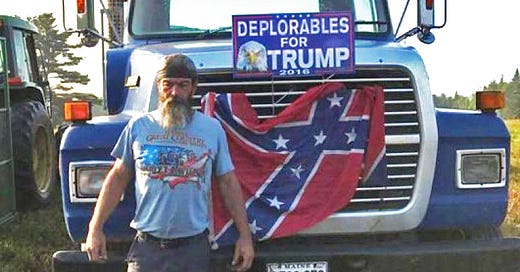


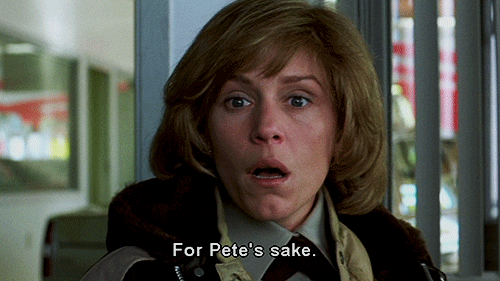
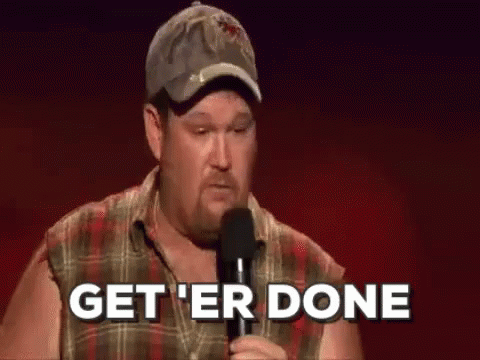

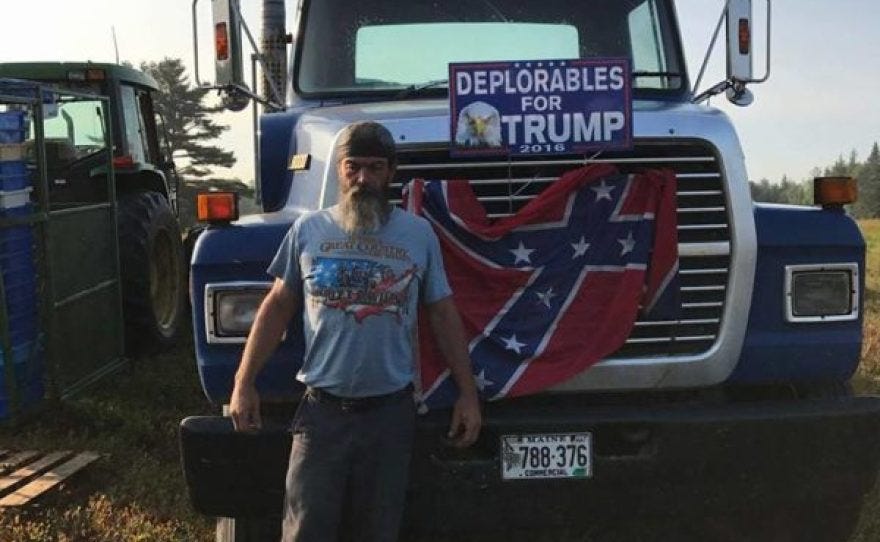
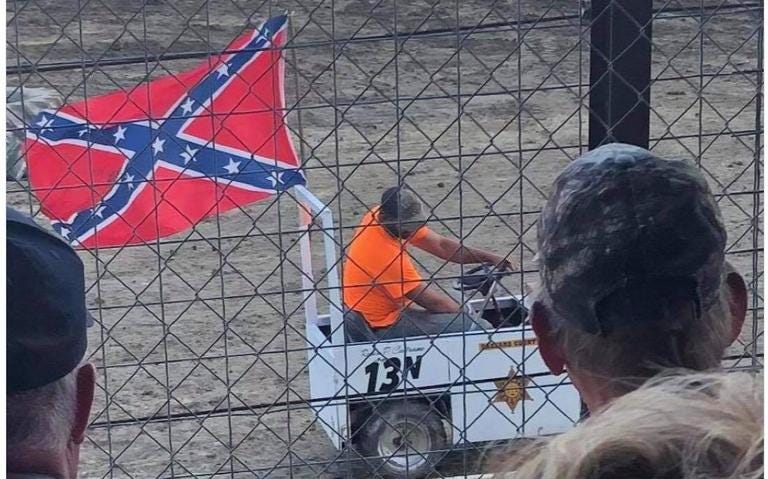
Great column, but the plural of Dollar General is Dollars General, and you can't tell me otherwise.
"What I’m still groping for is solid empirical confirmation that the Southernification of white rural America did happen and, if so, how it happened."
Religion couldn't be the only way, but how could it not be one of the ways? Many rural people aren't regular churchgoers, but they've got a church they're not going to. And Evangelical and megachurch culture (not exactly the same thing, but lots of overlap) is pretty Southern. Southern Baptists are *definitely* Southern — *and* thought of as more "orthodox" for being more conservative, *and* the denomination's "conservative" reputation seems to come, in part, from its segregationist past.
Yankee religion seemed to prize steadiness over revival: go to church regularly; you don't need to have a "born-again" story about how you got saved. Southern religion seems to have been less about regular attendance, more about sporadic revivals. It's less bougie, more suitable for people with unsteady lives. As churchgoing becomes less normal overall, perhaps it's easier for everyone, including those with otherwise-regular lives, to slip into sporadic attendance and an unchurched conflation of faith with other identity-oriented sentiments, like patriotism.
The South has a reputation for being "Christ-haunted" in a way that the North does not, and it's not all Flannery O'Connor's fault:
https://www.goodreads.com/quotes/443791-whenever-i-m-asked-why-southern-writers-particularly-have-a-penchant
My first sustained encounter with Evangelicals was on an Ivy-League campus. No surprise many of them *came* from the South. But I'm not sure where so many of them came from explains the shared unspoken sense that contemporary American Christianity becomes "more Christian" by becoming "more Southern". Immigrant students seemed to believe it, too.
Kate Bowler, associate professor of the history of Christianity in North America at Duke, has mapped out megachurch influence before. She might know something about its homogenizing effects. (She definitely knows about prosperity-gospel effects!) She might be a good (and good-humored) brain to pick on what role contemporary Christian culture plays in "Southernizing" all of rural America. I'm less familiar with Kristin Kobes Du Mez, and I haven't yet read her book, "Jesus and John Wayne", but her work might be another lead.